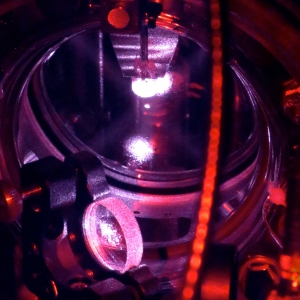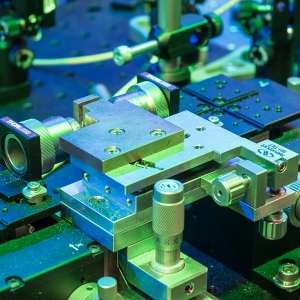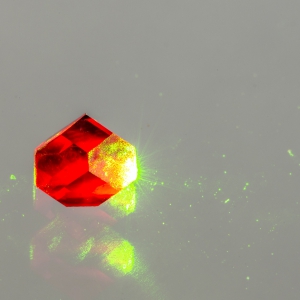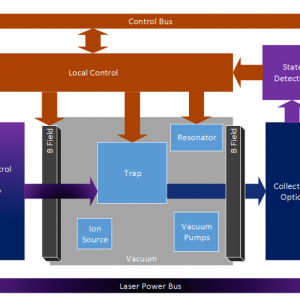Hardware
The ion traps form the qubit quantum information storage in the Q20:20 quantum computer demonstrator and the photonics link these qubits together in an optical network. The solid state qubit nodes research is looking at colour centres in diamond and superconducting microwave cavities as alternatives to ion traps for the matter processing system within the quantum computing device.
Our hardware work packages will merge to deliver a variety of hybrid light-matter devices on various time scales over the course of NQIT’s five-year programme.
On the photonics side, the early goals are low-loss switches, photonic memories, and frequency shifters. Developing an all-photonic quantum random number generator is also a priority.
In 2014 our ion traps were already in a world-leading position, having the record for highest levels of control of any qubit The early development goals are orientated towards realising a cost-effective, reproducible system for manufacture.
The superconducting qubits and diamond colour centre qubits start from a less advanced position, and have more exploratory targets including 3D cavity systems and diamond membranes-in-microcavities. The microcavities required for the diamond systems are also being developed as sensor devices in their own right.
%2001%20(small)_itok=wkIR0cfZ.jpg)



